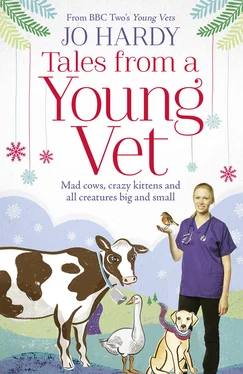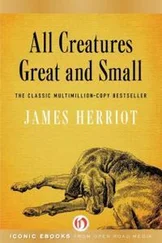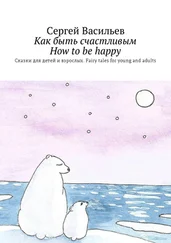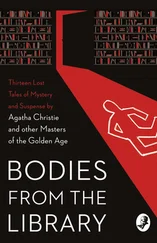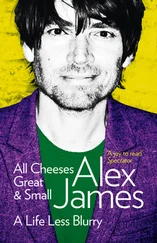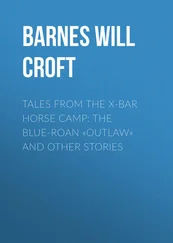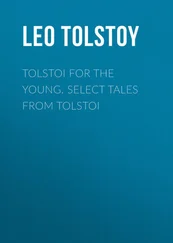‘Come on, Misty,’ I muttered, looking at her prone form. ‘Stay with us.’
After a tense hour she gradually began to perk up and I felt weak-kneed with relief. Along with a supervising vet I went back to see Mrs Stevens in the waiting room to let her know that Misty was starting to improve. We would keep an eye on her overnight and if all went well she would be on her way home the following morning.
Mrs Stevens clasped my hand, relief etched on her face. ‘Thank you, oh, thank you. I can’t tell you how grateful I am.’
‘We’re here to help and I’m glad we could,’ I said. ‘We’ll be checking on her right through the night, so try not to worry.’
Seeing Mrs Steven’s reaction I was reminded how much this job is about people as well as pets. Every animal belongs to someone who loves and cares for it. A dog or a cat becomes a member of the family, and sometimes they are also a treasured companion to someone living alone.
Back in the ER I took a gulp from the cup of tea I’d been handed half an hour earlier, now stone cold, and slumped into a chair. It looked as if it was going to be a long night.
As I finished my tea and stood up my best friend Lucy shot past, holding a very limp-looking poodle. ‘Nasty V and D,’ she muttered. Numerous cases of vomiting and diarrhoea appeared in the hospital, so the staff all knew it as V and D.
‘You OK?’
‘Yes, you?’
‘Fine. Catch you later.’
It was the longest conversation we’d managed all evening. Lucy was in my rotation group, so we would be doing all our core placements together. Clever, forthright and outgoing, Lucy was a fantastic friend and she was going to be a talented vet. We’d clicked from the moment we met, in the third year, and had been close friends ever since.
The phone rang and I leaped to grab it.
‘It’s reception. We’ve got a lady here with a very poorly cat.’
‘I’m on my way.’
I took a deep breath, rubbed my tired eyes, straightened my scrub top and headed down the corridor to the cat waiting area. The Queen Mother Hospital, known as the QMH, has a bank of reception desks and beyond them there are separate dog and cat waiting areas – for obvious reasons.
The QMH is situated on the campus of the Royal Veterinary College in Hertfordshire. It’s a world-class, state-of-the-art veterinary hospital with superb facilities. Twelve thousand animals go through the door each year to be treated by a team of highly experienced vets. The hospital’s daytime working hours are 7am to 7pm, but it offers a twenty-four-hour service. At night only the emergency department operates, so every animal that needs out-of-hours urgent care arrives there first, and more than any other service in the hospital it relies on students to keep it going. That meant long hours on our part; our shifts were midday to midnight, or four in the afternoon to four in the morning.
We trainee vets did the initial assessments of the endless stream of animals arriving overnight, but we then reported to a senior clinician and a couple of interns, qualified vets completing an advanced version of rotations to further their careers.
While we were the only ones on the spot, staff from other departments were always on call should they be needed, and the sight of a dishevelled surgeon, hair awry, shirt half-buttoned, hurrying through the darkened corridors towards the operating theatre to attend to an emergency was pretty common.
I already knew just how brilliant the emergency vets could be; my family’s lovely springer spaniel Tosca had undergone life-saving surgery at the QMH the previous year, after getting into a sack of dried food and gorging on a large quantity that swelled in her stomach. The first surgery at our local vet practice had gone wrong, causing her abdomen to become septic. While a very ill Tosca was rushed into theatre, a final-year vet student, who had been impressively thorough and calm, had consulted with me and my parents.
It had seemed impossible then that just a year later I would be the one doing the consultations. But here I was, doing my best to appear calm and competent. In the waiting room I looked around. ‘Pepsi?’ A friendly-looking couple and their young son leaped to their feet as I approached.
‘Pepsi isn’t well,’ said the boy, who was about ten. ‘She keeps going to sleep and she won’t eat.’
His mum joined in. ‘She’s been losing weight and now she just seems to have no energy.’
‘And she’s only eighteen months,’ finished the dad.
‘Right, well, let’s go through to the consulting room and take a look at her, shall we?’
I was already beginning to realise that with more than one owner present, all keen to tell me what was going on, I was likely to end up having to untangle the story.
Pepsi was a sorry sight. She was a pretty little tabby, and she flopped on the examining table with no interest in anything going on around her. I took a look at her gums. They were practically white, a sure sign that she was anaemic.
I asked the family to wait and carried her gently through to the chief clinician, Giacamo, in the ER. Exuberantly Italian, outgoing and laid-back, Giacomo is a brilliant vet. He examined Pepsi and asked me what I thought.
‘Her pale gums indicate severe anaemia.’
‘And what do you think might be causing that in such a young cat?’
I hazarded a guess. ‘Well, it’s either loss of blood, a destruction of blood, or a lack of production of blood. Since there’s no obvious haemorrhage, I think a good starting point would be to rule in or out IMHA – immune mediated haemolytic anaemia.’
‘OK, can you tell me about that?’
‘It happens when the cat’s body is destroying its own red blood cells. But we would need to run blood tests to check.’
‘Good, right, take some blood, get it down to the lab, have a look under the microscope, and come back and tell me what you reckon, fast as possible.’
I leaped into action, filling a small vial with blood from Pepsi’s jugular vein. Many cats would object to this and miaow loudly, but Pepsi was silent and unresponsive.
‘Don’t worry little thing,’ I said, stroking her head. ‘We’ll get you better.’
With no lab assistants there at night I needed to do the blood test myself. I hurried down the hospital’s hushed corridors to the lab, smeared a few drops of blood onto a slide and looked at it through a microscope. Some of the red blood cells looked almost transparent; they’re known as ghost cells. The diagnosis was right; Pepsi’s body was behaving as though her own blood cells were foreign bodies that had to be destroyed.
Giacomo was back at my side. ‘So, how do we treat it?’
‘We could downgrade her immune system, but that would make her vulnerable to other diseases.’
‘Or?’
‘Give her a transfusion?’
‘Yes, we’ll need to ask reception to ring around for a donor. And in the meantime we’ll give her the synthetic substitute. It might take a while to find a donor, and she can’t wait.’
Along with one of the interns I went to explain to Pepsi’s owners that she would need to be with us for a while and that she would need a transfusion.
‘Why has she got it?’ the mother asked.
‘We don’t always know. It can be triggered by something like a vaccination or certain types of drugs, but sometimes it just happens and the cause is unknown.’
I promised we would call with an update first thing in the morning. The little boy smiled and waved to me as they headed for the door.
Back in the ER Pepsi was being given Oxyglobin, a synthetic substance that could be given to cats and dogs needing transfusions as a temporary substitute for donor blood. Within a few hours she was sitting up and looking around and her eyes had turned bright gold, a side-effect of the Oxyglobin that made her look distinctly weird.
Читать дальше
